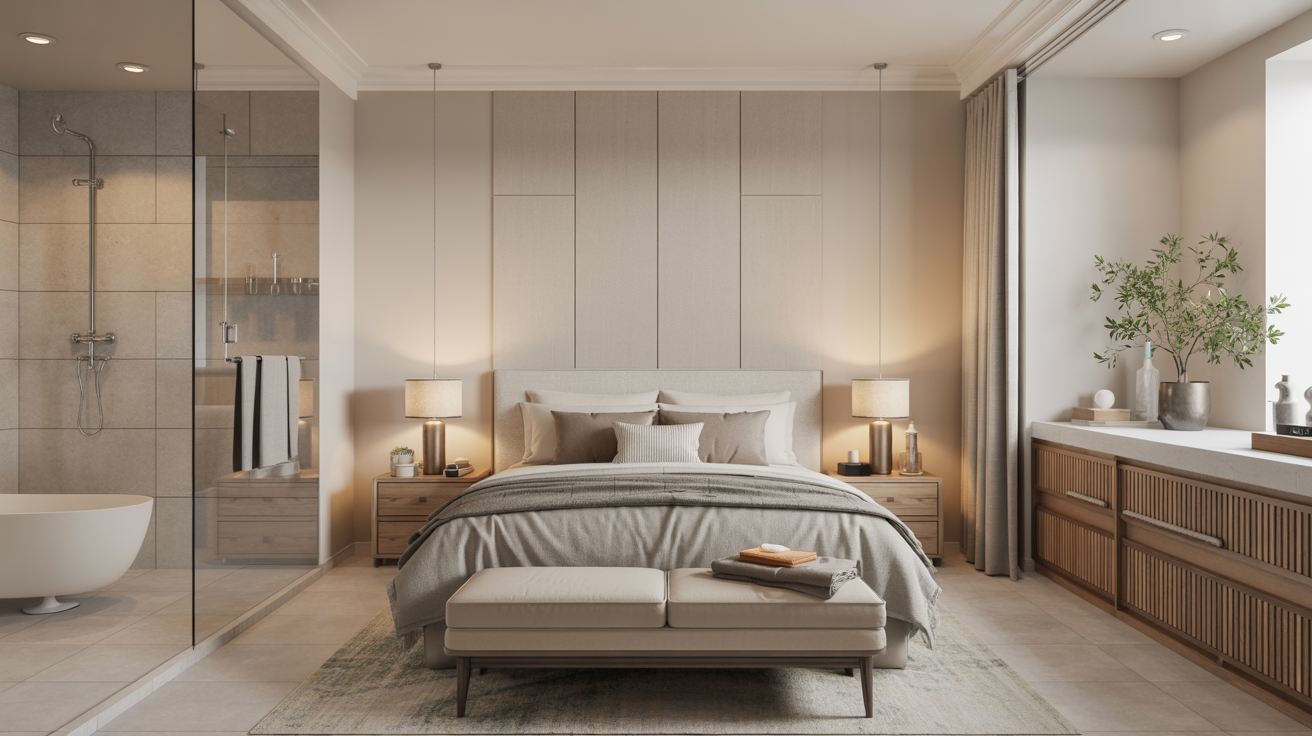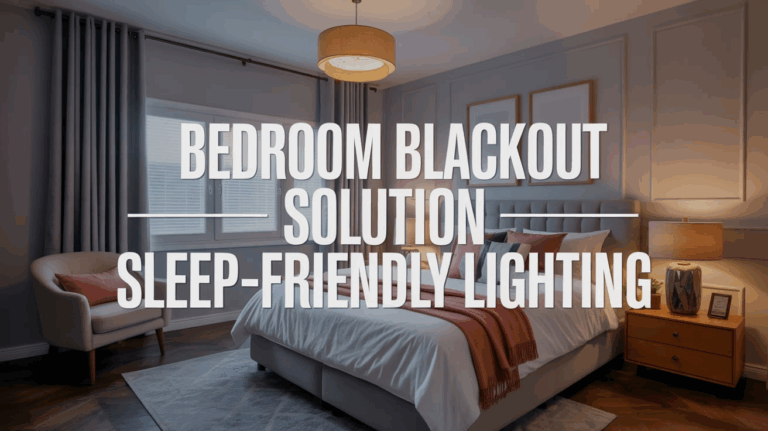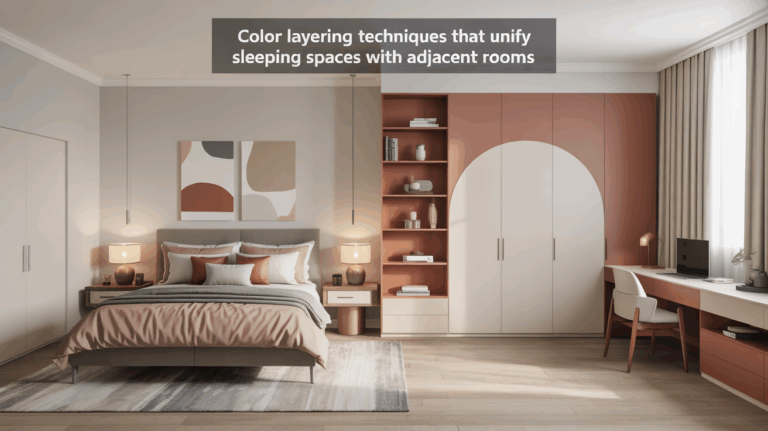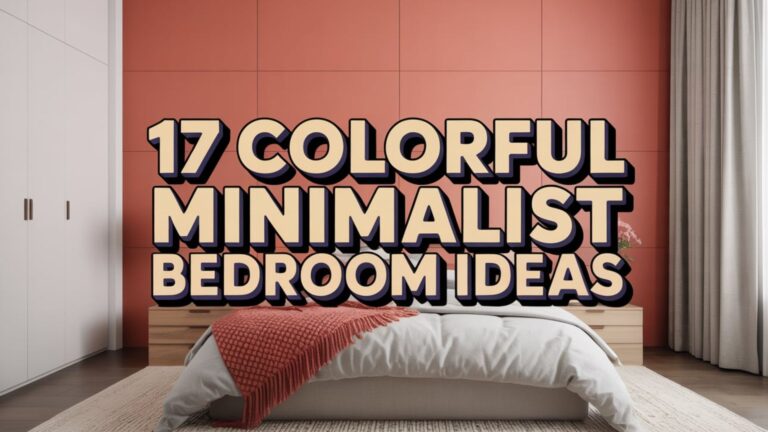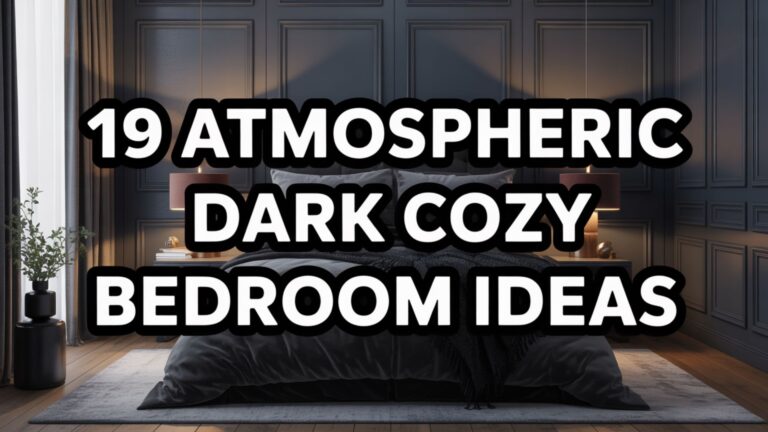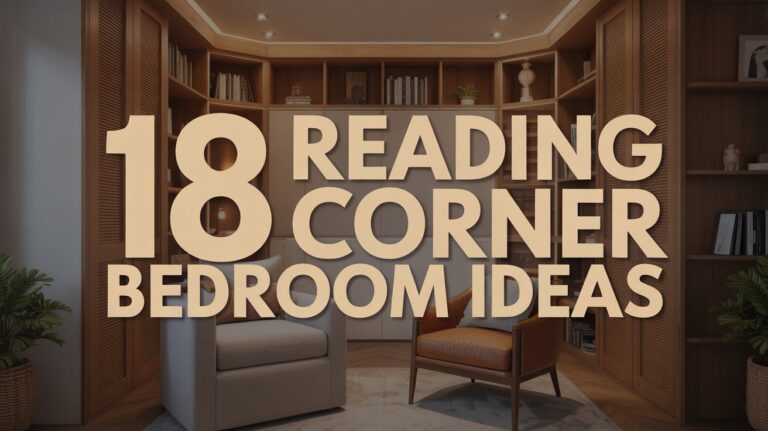How to Harmonize Bedroom and Bathroom Aesthetics for a Cohesive Suite
I have been, or can be if you click on a link and make a purchase, compensated via a cash payment, gift, or something else of value for writing this post. As an Amazon Associate, I earn from qualifying purchases. Please read my full Affiliate Disclosure for more information.
To harmonize your bedroom and bathroom, anchor a shared palette with one dominant color and two supporting tones, then carry textures through both spaces—think wool rugs, linen towels, and matte cabinetry that echo each other without matching. Balance lighting with warm, dimmable sources and consistent finishes, and use subtle zoning to guide flow. Keep hardware and trims cohesive, with restrained accents. Master this approach and you’ll release calmer cohesion throughout the suite, with more insight awaiting you.
Key Takeaways
- Define a unified color palette with one dominant hue and two supporting tones for both spaces.
- Use bridging textures and a core material to create echoing details across bedroom and bathroom.
- Align lighting with warm, dimmable layers and consistent fixtures to unify mood.
- Choose clean-lined, matte storage with cohesive hardware and subtle labeling for calm flow.
- Select textiles and linens in repeating tones and complementary textures to tie the spaces together.
Define Your Shared Palette
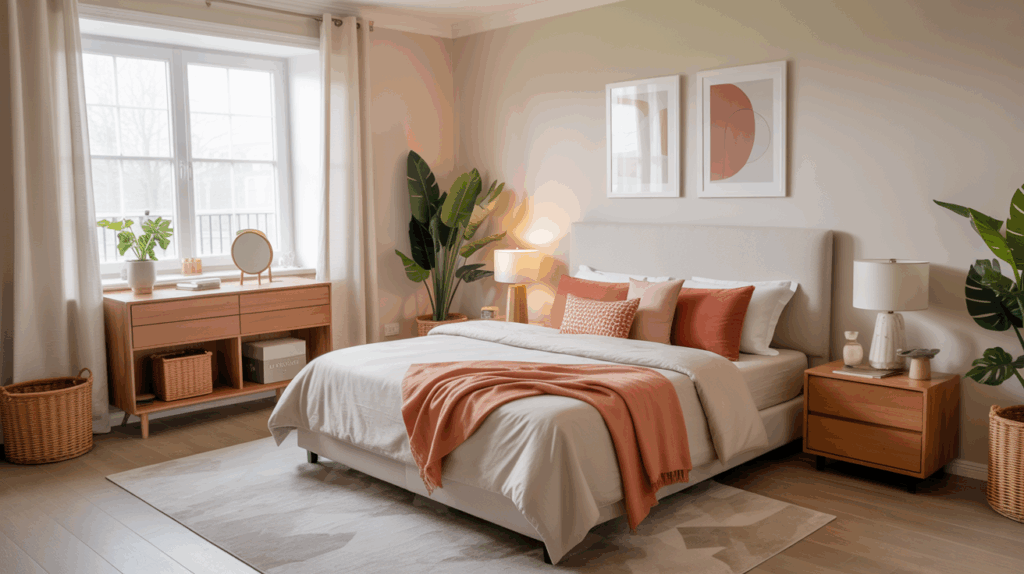
A shared palette sets the foundation for a unified look that still feels like two spaces. You define the room’s approach by selecting a core spine color and two supporting tones, then apply them thoughtfully across both areas. Prioritize color coordination that echoes the same undertones—warm vs. cool, saturated vs. muted—so transitions feel intentional, not accidental. Consider how light shifts these hues from morning to evening, adjusting accordingly. For pattern pairing, choose one dominant print and one secondary motif that share color threads, keeping scale varied between bedroom and bathroom. This clarity guides cohesive styling without forcing sameness.
Material Janus: Bridging Textures Across Spaces
You’ll start by translating material tone between spaces, so textures feel like one conversation rather than separate rooms. Keep a quiet rhythm where textures echo from the bedroom into the bathroom, preserving continuity without forcing sameness. Use deliberate choices—paired grains, finishes, and weights—to bridge spaces with clarity and cohesion.
Material Tone Translation
Material tone translation asks you to map textures and finishes across rooms so they feel connected, not identical. You’ll translate the vibe of one space into the other by choosing complementary palettes and finishes that remain distinct yet cohesive. Focus on a core material or hue and echo it through indicators like cabinetry, tiles, or textiles. Prioritize restraint: let color coordination and subtle shifts in sheen do the work. Your aim is legibility and harmony, not duplication. In practice, document the material tone you’re using in both rooms, then align accents and hardware for a unified, serene suite.
Texture Continuity Across Spaces
Texture ties the rooms without shouting. You’ll balance materials so that texture travels between spaces without competing cues. Aim for deliberate textural layering: a soft wool rug migrating from bedroom to bath, a matte stone countertop echoing a concrete shower niche, and linen towels that pick up the same tint as curtains. Maintain tactile contrast where you want focus—pair slick tiles with a plush surface underfoot, or combine velvety panels with cool ceramic. Let finishes share a restrained color vocabulary, so the suite feels cohesive, not twins. This approach sustains calm, refined depth through careful texture continuity.
Lighting for a Unified Mood
Good lighting ties the bedroom and bathroom together, shaping a calm, cohesive mood you can feel from morning routines to late-night wind-downs. You’ll balance task and ambient cues, letting form follow function. Focus on warmth, dimmability, and uniform color temperature to avoid jarring shifts between spaces. Use bedside lamps for soft, intimate pools of light and vanity lighting to illuminate detail without glare. Keep fixture lines cohesive across rooms for a seamless look.
- bedside lamps casting gentle glow
- vanity lighting that flattens shadows
- dimmers on every main source
- consistent finishes across fixtures
- mirrored reflections that stretch brightness
Storage Solutions With Cohesive Styling
Storage should feel as streamlined as the rest of the suite, with hidden drawers and open shelves that keep essentials accessible without visual clutter. You’ll balance form and function by selecting cabinetry with clean lines and matte finishes, then pairing it with decorative hardware that echoes the room’s hardware details. Aim for cohesive storage organization: label shelves subtly, group items by use, and keep daily necessities in reachable zones. Use storage furniture that serves dual purposes—vanities with drawers, benches with hidden compartments. By prioritizing thoughtful placement and restrained accents, your space stays calm, collected, and consistently styled.
Soft Furnishings That Tie the Room and Bath Together
Soft furnishings are where calm meets cohesion, quietly weaving bedroom and bath into a single, soothing narrative. You choose textiles that echo both spaces, so the suite feels intentional rather than staged. Texture and color matter more than pattern, creating quiet continuity. Here’s how to implement it:
- Soft gray wool throws paired with plush white pillows
- Toweling in a warm taupe that repeats in sheets and bath mats
- Linen or cotton duvet covers that mirror towel weaves
- Subtle embossed bath accessories in your palette
- Sateen sheets with a satin-edge throw for subtle shine
Bedroom linens, bathroom towels unify mood, resisting noise.
Subtle Zoning Without Breaking the Flow
You can create gentle separation cues that define zones without shouting boundaries. Think seamless progressions—soft floor accents, aligned cabinetry, and shared textiles that keep the look cohesive. Small, purposeful distinctions let you move between bedroom and bath with flow and intention.
Gentle Separation Cues
Gentle separation cues create discreet zones in a bedroom-bathroom suite without interrupting flow. You’ll use visual cues and spatial hints to delineate spaces without walls, keeping a cohesive rhythm throughout.
- Subtle color shifts that echo the palette across areas
- Plinths, rugs, or seating to anchor zones
- Lighting contrasts that cue different functions
- Floating vanities and synchronized hardware
- Texture changes that read as intentional progressions
These cues guide movement and mood, not harsh division. You stay in harmony, reading space as one story with intentional pauses, ensuring practicality and refinement.
Seamless Transition Ideas
Seamless shifts keep the bedroom and bathroom feeling like one story with intentional pauses. You create subtle zoning by aligning materials, colors, and fixtures, then letting small distinctions define each space without shouting. Use decorative borders sparingly to cue transitions—narrow trim at the floor, a vertical stripe in paint, or a mosaic edge where rooms meet. Color blocking offers quiet separation: keep palettes cohesive, but assign one cool tone to bath surfaces and a warmer hue to bedroom accents. Let texture do the talking—linen, stone, and matte finishes—so flow remains uninterrupted, purposeful, and visually calm.
Accessory Language: Consistent Accents
When you center your accents around a unified palette and motif, rooms feel intentional rather than pieced together; the result is a calm, cohesive spectrum that ties bedroom and bathroom together.
- coordinated hardware and fixtures
- repeating texture cues (linen, stone, metal)
- aligned trim and framing details
- shared tone in artwork and textiles
- consistent metal finishes everywhere
Accent consistency anchors language harmony, letting color and form speak softly. You’ll notice fewer surprises and more balance, so downtime feels curated, not chaotic. This disciplined approach honors restraint, yet remains expressive—clear, purposeful, and inviting.
Practical Steps to a Calm, Cohesive Suite
Start by outlining a simple, shared palette—two or three colors pulled from the textiles and finishes you’ve chosen, so the eye moves smoothly between bedroom and bath. Then align lighting, hardware, and textiles so textures echo across spaces, creating color harmony without shouting. Use cabinetry and vanity spans to reinforce a singular silhouette, reducing visual clutter. Pick a restrained pattern or none at all to preserve calm. Map zones with subtle cues—mirror framing, towel hooks, and rug edges—so spatial flow feels intentional. Finally, test contrast levels in daylight and artificial light; adjust elements until balance holds.
Conclusion
You’ve learned how to fuse bedroom and bath into one calm, cohesive suite. Start with a shared palette, then let textures ripple across spaces with material echoes. Use lighting to steady the mood, and choose storage and textiles that speak the same language. Subtle zoning keeps flow, while consistent accents reinforce harmony. Practical steps, restrained style, and thoughtful details turn two rooms into a single, sanctuary-like retreat you’ll love waking up in and winding down within.
